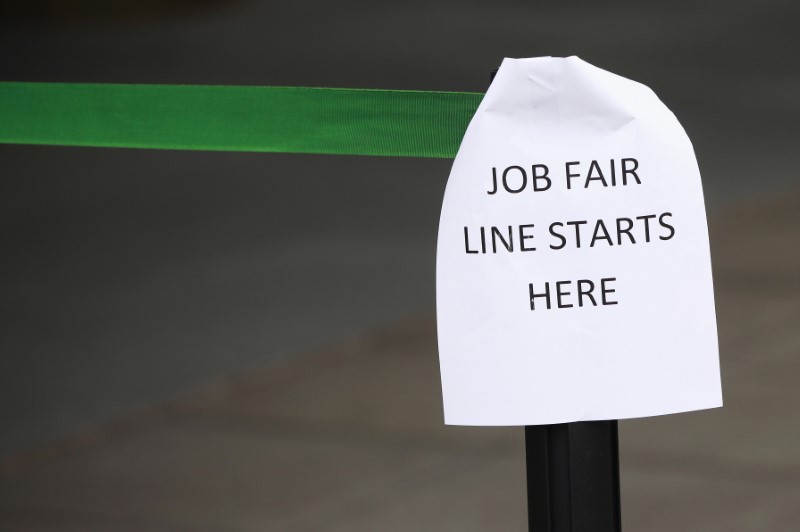By Lucia Mutikani
WASHINGTON (Reuters) - The number of Americans filing for unemployment benefits fell last week for the first time in a month and producer prices unexpectedly rose in June, likely keeping the Federal Reserve on course for a third interest rate increase this year.
Thursday's data from the Labor Department underscored labor market buoyancy and suggested that there was enough momentum in the economy to generate some inflation, even though price pressures still remain moderate.
"It remains hard for companies to hire skilled workers. Inflation isn't slip-sliding away from the Fed's goal," said Chris Rupkey, chief economist at MUFG in New York. "We expect they are on track to announce the start of the balance sheet unwind in September and go for the last of three rate hikes planned for this year in December."
Initial claims for state unemployment benefits dropped 3,000 to a seasonally adjusted 247,000 for the week ended July 8, the Labor Department said. It was the 123rd straight week that claims remained below 300,000, a threshold associated with a healthy labor market.
That is the longest such stretch since 1970, when the labor market was smaller. The labor market is near full employment, with the jobless rate at 4.4 percent.
The drop in first-time applications for jobless benefits followed data last week showing the economy created 222,000 jobs last month, the second biggest payrolls increase this year.
A Fed survey of the economy published on Wednesday showed "labor markets tightened further for both low- and high-skilled positions, particularly in the construction and IT sectors."
Prices for U.S. Treasuries fell, with the yield on the 30-year government bond hitting a session high. Stocks on Wall Street were trading slightly higher, while the dollar was little changed against a basket of currencies.
PRODUCER PRICES NUDGE UP
In another report, the Labor Department said its producer price index for final demand edged up 0.1 percent last month amid sustained increases in the cost of services that offset declining energy prices.
That followed an unchanged reading in May. The year-on-year increase in the PPI, however, slowed to 2.0 percent from 2.4 percent in May as last year's energy-driven rise dropped out of the calculation. Economists had forecast the PPI being unchanged last month and rising 1.9 percent from a year ago.
A key gauge of underlying producer price pressures that
excludes food, energy and trade services increased 0.2 percent last month. The so-called core PPI fell 0.1 percent in May.
The core PPI increased 2.0 percent in the 12 months through
June after climbing 2.1 percent in May.
Fed officials are closely watching inflation, which has remained below the U.S. central bank's 2 percent target for five years. They have largely viewed the recent retreat in price pressures as transitory.
"We expect inflation pressures to firm in the second half of the year, but any realized gains are likely to be limited," said Sam Bullard, a senior economist at Wells Fargo (NYSE:WFC) Securities in Charlotte, North Carolina.
The Fed increased borrowing costs in June for a second time this year. Another rate hike is forecast in December and economists also expect the U.S. central bank to announce in September a plan to start reducing its $4.2 trillion portfolio of Treasury bonds and mortgage-backed securities.
Fed Chair Janet Yellen told lawmakers on Wednesday that the economy was healthy enough for the central bank to raise rates and begin winding down its massive bond portfolio.
Last month, prices for services gained 0.2 percent, accounting for almost 80 percent of the increase in the PPI.

Services were lifted by a 0.3 percent rise in the index for final demand trade services, excluding transportation and warehousing. It was the fourth straight monthly increase in services and followed a 0.3 percent gain in May.